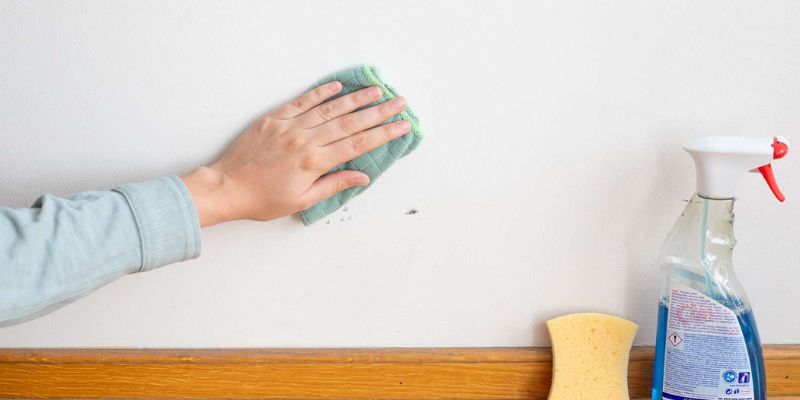Wall claddings are a popular choice for both residential and commercial spaces, as they enhance the aesthetics and provide protection to the underlying walls. However, like any other surface, wall claddings require regular maintenance and cleaning to ensure they remain in pristine condition. In this article, we will explore “How Do I Maintain and Clean Wall Claddings?”, providing you with valuable insights and expert tips. Whether you have brick, stone, wood, or any other type of wall cladding, we’ve got you covered!
Understanding the Importance of Wall Cladding Maintenance
Proper maintenance of wall claddings is crucial for several reasons:
- Preservation: Regular maintenance helps preserve the integrity and longevity of wall claddings, preventing premature deterioration and damage.
- Aesthetics: Well-maintained wall claddings contribute to the overall visual appeal of a space, enhancing its beauty and charm.
- Hygiene: Clean wall claddings promote a healthy environment by preventing the accumulation of dirt, mold, and mildew, which can be detrimental to health.
General Maintenance Tips for Wall Claddings
To ensure the longevity and cleanliness of your wall claddings, follow these maintenance tips:
- Inspect Regularly: Perform routine inspections to identify any signs of damage, cracks, or loose cladding. Addressing these issues promptly can prevent further complications.
- Clean Spills Immediately: Accidental spills can occur, especially in high-traffic areas. Clean up spills promptly to prevent staining or damage to the cladding surface.
- Trim Nearby Vegetation: If your wall cladding is located near trees or plants, trim the vegetation regularly to avoid any contact or potential damage to the cladding.
- Apply Protective Sealants: Depending on the type of wall cladding, applying a protective sealant can provide an extra layer of defense against moisture, UV rays, and other external elements.
- Repair Cracks and Damage: If you notice any cracks, chips, or damage to the wall cladding, it’s essential to address them promptly. Consult a professional if necessary to ensure proper repairs.
- Follow Manufacturer’s Guidelines: Always refer to the manufacturer’s guidelines for specific maintenance instructions and product recommendations tailored to your wall cladding type.
Cleaning Techniques for Different Types of Wall Claddings
Different types of wall claddings require specific cleaning techniques to maintain their appearance and condition. Here’s a breakdown of cleaning methods for common wall cladding materials:
Brick Wall Claddings
- Cleaning brick wall claddings involves a combination of gentle scrubbing and low-pressure washing:
- Start by removing loose dirt and debris with a soft-bristle brush or broom.
- Create a cleaning solution by mixing warm water with mild dish soap or a brick cleaner specifically designed for this purpose.
- Dip a soft sponge or brush into the cleaning solution and gently scrub the brick surface.
- Rinse the bricks thoroughly with clean water, using a garden hose or a low-pressure washer.
- Allow the bricks to air dry naturally.
Stone Wall Claddings
- Cleaning stone wall claddings requires careful handling to avoid scratching or damaging the surface:
- Remove loose dirt and debris from the stone surface using a soft brush or broom.
- Prepare a cleaning solution by mixing warm water with a pH-neutral stone cleaner.
- Apply the cleaning solution to the stone surface using a soft sponge or mop, ensuring even coverage.
- Gently scrub the stone using circular motions, focusing on any stained or soiled areas.
- Rinse the stone cladding thoroughly with clean water, ensuring all traces of the cleaning solution are removed.
- Dry the stone surface with a soft cloth or allow it to air dry.
Wood Wall Claddings
- Cleaning wood wall claddings requires a delicate approach to preserve the natural beauty of the material:
- Start by dusting the wood surface with a soft cloth or duster to remove loose dirt and debris.
- Prepare a cleaning solution by mixing warm water with a mild wood cleaner or a few drops of dish soap.
- Moisten a soft cloth or sponge with the cleaning solution, ensuring it is damp and not soaking wet.
- Gently wipe the wood surface, following the grain pattern, to avoid scratching or damaging the wood.
- Rinse the cloth or sponge regularly to prevent reapplying dirt to the wood surface.
- Once the cleaning is complete, wipe the wood cladding with a dry cloth to remove excess moisture.
Effective Cleaning Products for Wall Claddings
Choosing the right cleaning products is essential to maintain the cleanliness and integrity of your wall claddings. Here are some effective cleaning products suitable for various types of wall claddings:
- pH-Neutral Cleaners: pH-neutral cleaners are safe for most types of wall claddings, including brick, stone, and wood. They effectively remove dirt and grime without causing any damage.
- Specialized Stone Cleaners: For stone claddings, consider using specialized stone cleaners that are formulated to tackle tough stains and deposits without harming the natural stone surface.
- Wood Cleaners and Conditioners: When cleaning wood claddings, opt for mild wood cleaners or specialized wood cleaners that gently remove dirt and enhance the natural luster. Follow up with a wood conditioner to protect and nourish the wood.
- Mold and Mildew Cleaners: If you notice mold or mildew on your wall claddings, use mold and mildew cleaners that are safe for the specific cladding material. Ensure proper ventilation and follow the manufacturer’s instructions for safe usage.
Remember to always test any cleaning product on a small, inconspicuous area of the wall cladding before applying it to the entire surface. This will help ensure compatibility and prevent any potential damage.
Preventing Stains and Damage to Wall Claddings
Taking preventive measures can significantly reduce the chances of stains and damage to your wall claddings. Consider the following tips:
- Avoid Harsh Chemicals: Harsh chemicals, such as bleach or abrasive cleaners, can damage the surface of wall claddings. Use mild cleaning agents and avoid any products that contain acids or alkalis unless recommended by the manufacturer.
- Protective Coverings: During construction or renovation projects, cover the wall claddings with protective coverings to prevent splatters and accidental damage from other construction activities.
- Regular Cleaning Schedule: Establish a regular cleaning schedule based on the specific requirements of your wall claddings. Regular cleaning prevents the buildup of dirt, grime, and stains.
- Avoid Pressure Washing: Unless specifically recommended by the manufacturer, avoid using high-pressure washers on wall claddings. Excessive pressure can cause damage to the cladding material or dislodge mortar in the case of brick claddings.
- Proper Ventilation: Ensure proper ventilation in areas with wall claddings, especially in spaces prone to moisture or high humidity. Adequate ventilation helps prevent the growth of mold and mildew.
By following these preventive measures, you can maintain the cleanliness and integrity of your wall claddings, ensuring they stay beautiful and functional for years to come.
Frequently Asked Questions
Q: How often should I clean my wall claddings?
A: The frequency of cleaning depends on various factors such as the location, exposure to dirt or pollutants, and the type of cladding material. As a general guideline, it is recommended to clean wall claddings at least once or twice a year. However, high-traffic areas or spaces exposed to environmental elements may require more frequent cleaning.
Q: Can I use a pressure washer to clean my wall claddings?
A: While pressure washers can be effective for certain types of claddings, such as stone or concrete, it is crucial to check the manufacturer’s recommendations. High-pressure water can damage delicate cladding materials or dislodge mortar in the case of brick claddings. Always use low-pressure settings and maintain a safe distance from the cladding surface.
Q: How do I remove stubborn stains from my wall claddings?
A: Stubborn stains may require specialized cleaning techniques or products. It’s advisable to start with mild cleaning solutions and gentle scrubbing. If the stains persist, consider using specialized stain removers or seeking professional assistance to avoid damaging the cladding material.
Q: Can I paint or apply coatings on my wall claddings?
A: In some cases, it is possible to paint or apply coatings on wall claddings to enhance their appearance or provide additional protection. However, it’s important to consult the manufacturer’s guidelines and choose suitable paint or coatings specifically designed for the type of cladding material.
Q: Are there any natural or homemade cleaning solutions for wall claddings?
A: Yes, certain natural or homemade cleaning solutions can be effective for wall claddings. For example, a mixture of warm water and vinegar can help remove light stains and disinfect the surface. However, always test these solutions on a small area first and ensure compatibility with the specific cladding material.
Q: Can I use a steam cleaner on my wall claddings?
A: Steam cleaners can be used on certain types of wall claddings, such as tile or stone, to remove dirt and grime effectively. However, it’s crucial to check the manufacturer’s recommendations and use appropriate attachments and settings to prevent damage.
Conclusion
Maintaining and cleaning wall claddings is essential to preserve their aesthetics and prolong their lifespan. By following the tips and techniques outlined in this article, you can effectively maintain the cleanliness and integrity of your wall claddings.
Remember to choose suitable cleaning products, follow manufacturer’s guidelines, and take preventive measures to minimize stains and damage. With regular maintenance and proper care, your wall claddings will continue to enhance the beauty of your space for years to come.

